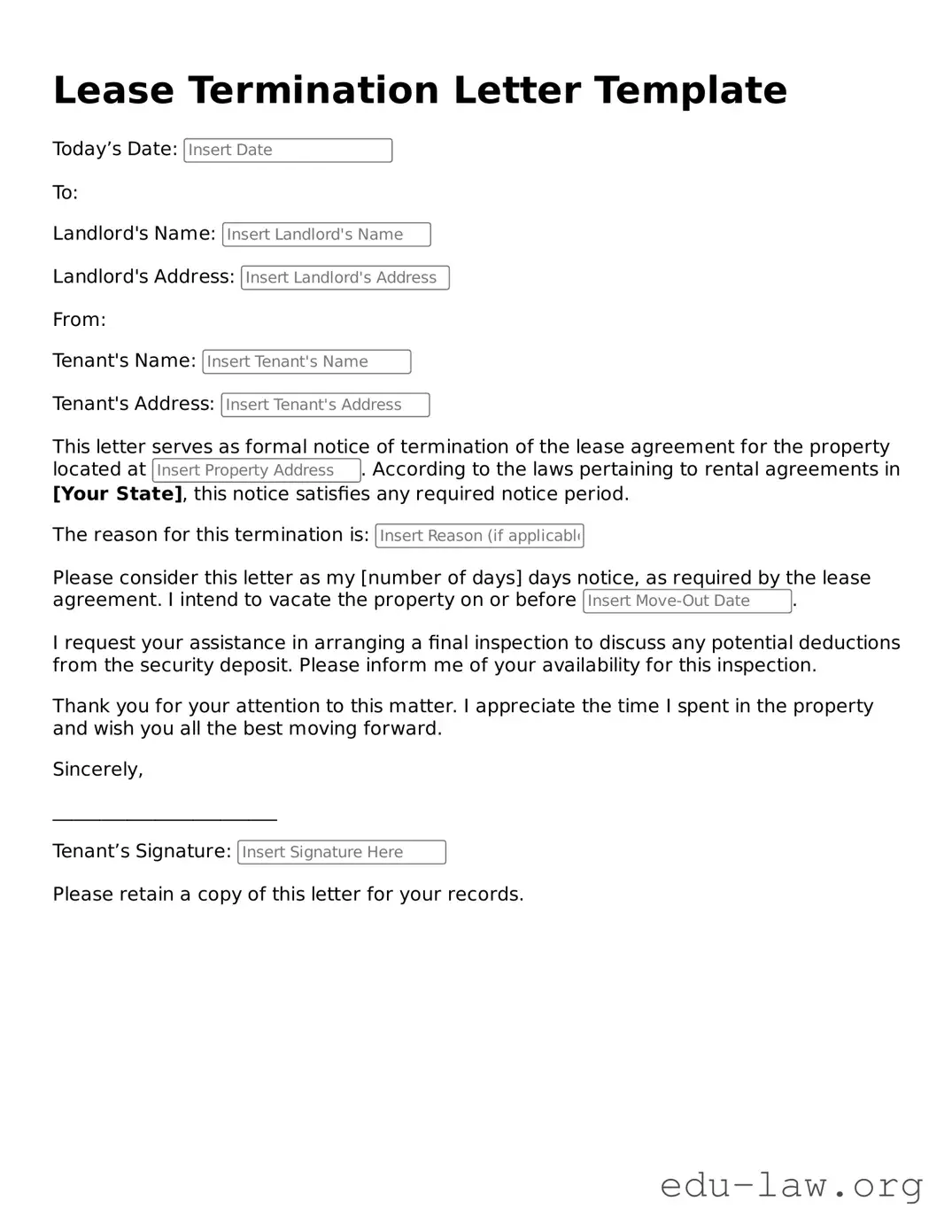What is a Lease Termination Letter?
A Lease Termination Letter is a formal notice given by a tenant or landlord announcing the intention to end a rental agreement. This document outlines the intent to vacate the property or to terminate the lease, providing both parties with clarity about the future of the tenancy. It often includes the date by which the property will be vacated and any relevant details about the lease agreement.
Who should use a Lease Termination Letter?
Both tenants and landlords can benefit from using a Lease Termination Letter. Tenants use it when they wish to inform their landlord of their intention to vacate the property. Conversely, landlords may issue it to inform tenants of lease termination following violations or upon lease expiration. This letter serves as a significant communication tool for everyone involved.
What information should be included in the letter?
The letter should include essential details such as the names of the tenant and landlord, the address of the rental property, the effective date of termination, and any specific terms outlined in the lease agreement concerning termination. It is also beneficial to mention the forwarding address for the return of security deposits, when applicable.
Is it necessary to provide a reason for termination?
While it is not always required to provide a reason for termination, doing so can promote transparency and amicable relations. Tenants may prefer to explain their circumstances, such as job relocation or financial reasons. Landlords might need to cite lease violations or other legitimate reasons for terminating the agreement.
How much notice do I need to give before terminating a lease?
The notice period required before terminating a lease often depends on state laws and the specific lease agreement. Typically, a notice period of 30 days is common, but this can vary. It is important to refer to local regulations and your lease terms to determine the appropriate timeframe for your situation.
Can I email a Lease Termination Letter instead of sending it by mail?
Sending a Lease Termination Letter via email may be acceptable in certain situations, particularly if your lease agreement does not specify a method of delivery. However, it is advisable to send a hard copy through certified mail for documentation purposes. This ensures that there is a record of when the notice was sent and received.
What happens if I do not send a Lease Termination Letter?
If you fail to send a Lease Termination Letter, you may be considered in breach of the lease agreement. This could result in financial liability for rent until a proper notice is provided according to the terms of the lease. It is crucial to communicate your intentions clearly and in accordance with local laws to avoid complications.
Do I need to include my security deposit information in the letter?
Including security deposit information in your termination letter is encouraged but not mandatory. Mentioning your forwarding address for the return of the security deposit can help facilitate the process. Additionally, referring back to the terms in the lease regarding the return of the deposit adds clarity and sets expectations.
What should I do after sending the Lease Termination Letter?
After sending the Lease Termination Letter, it is essential to keep a copy for your records. You may also want to follow up with your landlord or tenant to confirm receipt of the letter. Begin preparing for your move and ensure that any cleaning or repairs required by your lease agreement are completed.
Can I modify a Lease Termination Letter if needed?
Yes, you can modify a Lease Termination Letter to better fit your specific circumstances. It is important that any changes remain clear and relevant to the lease agreement. Once modified, ensure that both parties understand and agree to the terms specified in the updated letter.
